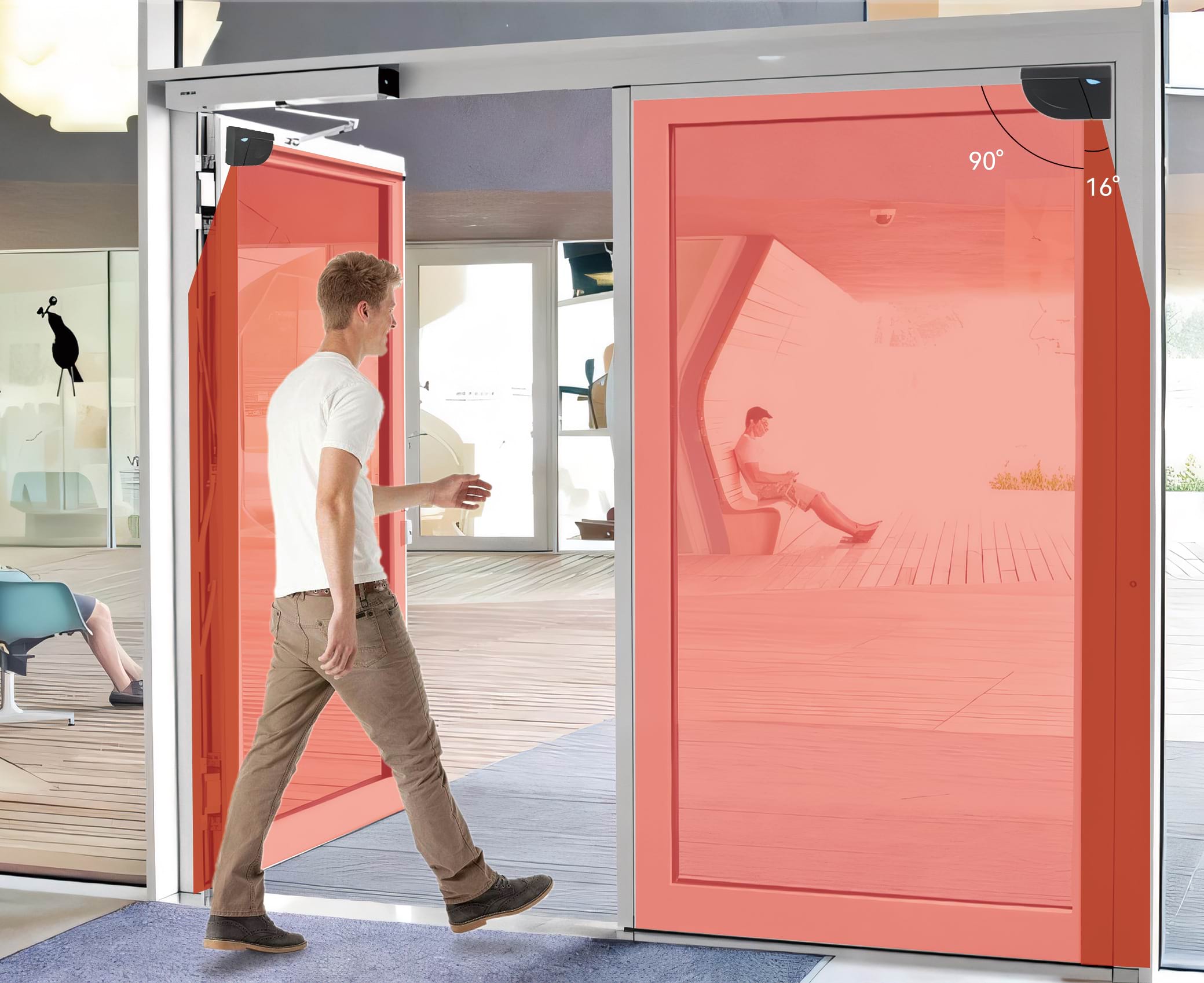The Working Principle of Laser Safety Sensors for Door Automation
In modern buildings, safety and convenience are at the heart of every automatic door system. From commercial entrances to industrial facilities, laser safety sensors play a crucial role in ensuring that automatic doors operate smoothly while protecting users from accidental injury or equipment damage. But how exactly do these sensors work? Let’s take a closer look at the working principle behind laser safety sensors in door automation.

1. What Are Laser Safety Sensors?
Laser safety sensors are intelligent detection devices that use laser light to monitor the area around an automatic door. Unlike traditional infrared or microwave sensors that detect simple motion, laser sensors create a precise, two-dimensional or three-dimensional detection field using laser beams. This allows them to recognize objects, people, and even small obstacles with exceptional accuracy.
These sensors are commonly used in:
- Automatic swing doors
- Sliding doors
- Revolving doors
- Industrial and garage doors
Their main purpose is to prevent collisions or entrapments by ensuring that the door only operates when the detection area is clear.
2. How Do Laser Safety Sensors Work?
Laser safety sensors operate on the principle of Time-of-Flight (ToF) or triangulation measurement, depending on the model.
a. Laser Emission
The sensor emits a continuous or pulsed infrared laser beam that scans the monitored area. The beam reflects off objects or people within its detection zone.
b. Signal Reflection
When the emitted laser light hits an object, part of the light is reflected back to the sensor’s receiver. The sensor then calculates the distance between itself and the detected object.
c. Distance and Position Calculation
Using the time it takes for the laser to return (in ToF systems) or the angle of reflection (in triangulation systems), the sensor builds a real-time map of the monitored area. This allows it to determine whether there’s an obstacle within a defined safety zone.
d. Intelligent Door Control
The sensor communicates directly with the door control system.
- If the area is clear, the door opens or closes as intended.
- If an object or person is detected in the danger zone, the sensor sends a stop or reverse signal to prevent the door from closing.
This rapid detection and response—usually within milliseconds—ensures maximum safety and efficiency in automated door operations.
3. Advantages of Laser Safety Sensors
- High Precision Detection: Capable of detecting small or stationary objects that other sensors may miss.
- Wide Coverage: Adjustable detection angles and ranges make them ideal for different door types and environments.
- Weather and Light Resistance: Unaffected by ambient light or temperature changes, maintaining stable performance indoors and outdoors.
- Energy Efficiency: Prevents unnecessary door movements, reducing wear and energy consumption.
- Enhanced User Safety: Protects users from pinch points, collisions, and entrapments.
4. Applications in Modern Door Systems
Laser safety sensors are now a standard feature in:
- Hospital doors – for patient and staff safety
- Airport terminals and shopping centers – where large traffic flows require fast and safe access
- Industrial and warehouse doors – to protect workers and equipment during loading operations
Their ability to provide precise, real-time protection makes them an essential component in intelligent building automation systems.
5. Future Trends
As automation and AI continue to evolve, laser safety sensors are becoming smarter. Future innovations include:
- AI-based object recognition to distinguish between people, vehicles, and static barriers
- Networked sensors that integrate with building management systems (BMS)
- Compact, low-power designs for energy-efficient automation solutions
These advancements are paving the way toward safer, more responsive, and more intelligent door systems across industries.
Conclusion
Laser safety sensors are a cornerstone of modern door automation, combining precision, speed, and reliability. By using advanced laser measurement technologies, these sensors ensure that every door movement is both efficient and safe. For building owners, installers, and users alike, investing in high-quality laser safety sensors means ensuring safety without compromising convenience.







